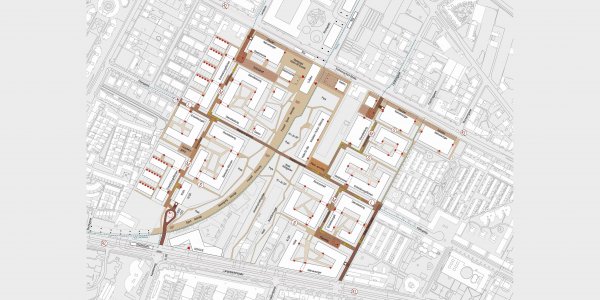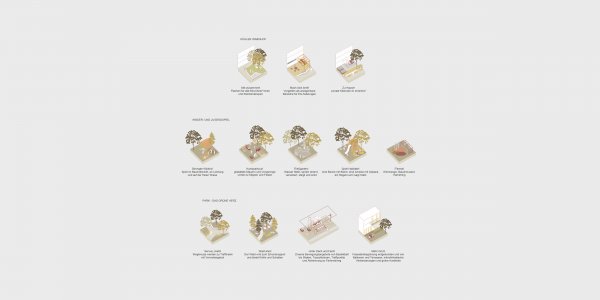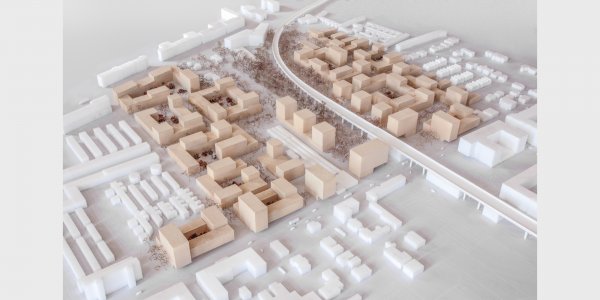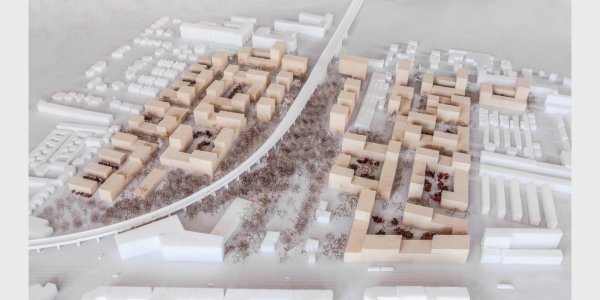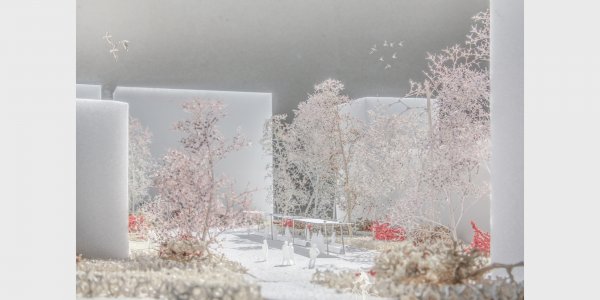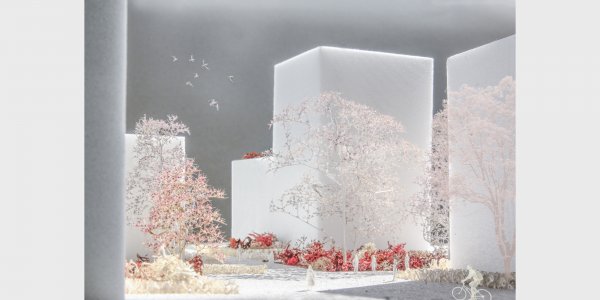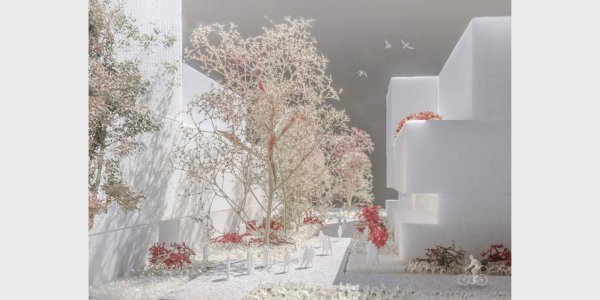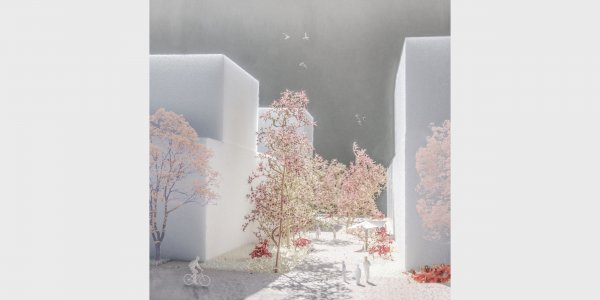Urban development model Erzherzog-Karl-Strasse
Project data
Year
- 2021
Status
- Competitions
Type
- Urban development
"The little town around" - The park in the middle.
The added value of the communal encourages dreaming: those who come here experience garden life in neighborhoods and a green center that hold permanent options for changing individual and community needs.
The park is a ribbon of open space that offers different qualities and uses, depending on its location. At the edges, this becomes an attractive contact area between new and existing residents.
The special quality of the residential quarters with the green courtyards and their spatial characteristics is the conceptual approach of this project, which makes it possible to stay for a long time, even with changing living circumstances, through a permanent adaptability of the typologies.
The structure follows the principles of a concise, open, permeable development that, through its positioning, creates a significant urban figure diverse, private, semi-public and public open spaces. The planned typology and its variability offer opportunities to organize neighborhoods in a participatory manner. "The little town around" is an urban fabric of short paths and multiple detours. Urban squares, manageable small-scale neighborhoods, the child-friendly environment, open spaces with children's, youth and sports playgrounds, diverse opportunities for recreation, exercise and relaxation, as well as communication and meeting zones make it an open city where people like to be at home.
The proposed solution aims to create a clearly legible urban structure. It develops the urban layout of the surrounding area, which is partly based on the General City Plan of 1912. The development area is divided into connecting street spaces and compact building lots. The focal point of the plan - not only geographically - is the central city park.
The street spaces are the place where the city is experienced on a daily basis. This is exactly where our concept starts:
The neighborhood streets are composed of sparsely dimensioned public spaces and generous, intensively usable, open front gardens. In these green street spaces, trees are brought to the center, where they have the best conditions for development. Movement takes place in the center of the street, deceleration towards the edges. Street spaces are strengthened by orienting diverse uses such as services, commercial, development spaces with affordable rents, and other non-residential uses on the ground floor to neighborhood alleys. Since pluralism/diversity, multicolor, and vibrancy are becoming key characteristics of urban space, program diversity, adaptability, and flexibility of open spaces are becoming increasingly important arguments in the choice of where to work and live. This is responded to with a diverse range of design of street spaces, public open spaces, semi-public courtyard and rooftop spaces, and even carefully planned private gardens.
Another central design theme is the integration into the built environment, which is achieved with a small-scale structure and staggered heights. The staggered heights with plinths and add-ons are continued as a design principle.

